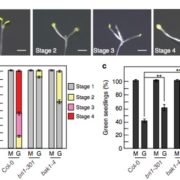
BRI1 and BAK1 interact with G proteins and regulate sugar-responsive growth and development (Nature Comms.)
Plant Science Research WeeklySensing sugar is important, especially if you are a plant, as it helps you to decide whether to invest it in new tissues, or rather store it for later. Low levels of glucose promote seedling growth, while high concentrations repress the development. Peng et al. discovered that brassinosteroid signaling…

Comparative analysis of Arabidopsis ecotypes reveals a role for brassinosteroids in root hydrotropism (Plant Physiol.)
Plant Science Research WeeklyPlastic plant growth serves them well, as it ensures efficient exploration of the environment. A plant can direct the growth of its roots towards the water, but the mechanisms behind hydrotropism are still to be fully understood. Miao et al. performed a screen of 30 Arabidopsis accessions for altered…
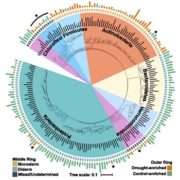
Increase in monoderm bacteria in drought-delayed early sorghum root microbiomes (PNAS)
Plant Science Research WeeklyDrought stress drastically decreases crop productivity. Some root-associated bacteria have been shown to decrease the negative effects of drought stress on plants, but the role of drought in the development of the root microbiome has not been studied. Xu and colleagues use root metabolomics and 16S rRNA…
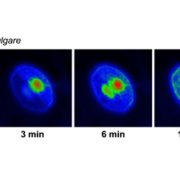
Guard cells in fern stomata are connected by plasmodesmata, but control cytosolic Ca2+ levels autonomously (New Phytol)
Plant Science Research WeeklyPotassium (K+) and calcium (Ca2+) ions are important for stomatal function in seed plants, however little is known about the contributions of these ions in the stomata of bryophytes and early-branching vascular plants. Voss et al. focus on how fern stomata regulate ion transport. Injection of K+ into…
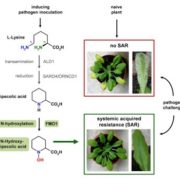
Emergence of N-hydroxy-pipecolic acid as a key long-distance immunity signal in Arabidopsis
Plant Science Research WeeklySystemic acquired resistance is a form of long-distance immunity employed by plants to protect distal uninfected tissues upon localized pathogen attack. Over the past two decades, a number of putative long-distance signals have been described as regulators of systemic immunity including the lysine catabolite…

What We're Reading: April 27th
WWR Full PostReview: Venus Flytrap: How an excitable, carnivorous plant works
The one sure-fire way to get children excited about plants is to show them how a Venus flytrap works. But how does it work? We’ve all heard that the trap “counts” the number times it is triggered, and that it requires two or…
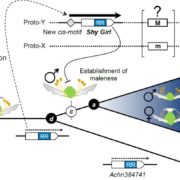
Open Access Shy Girl Gives Kiwifruit Male Flowers
Blog, Research, The Plant Cell, The Plant Cell: In BriefFrom the human perspective, separate sexes are the norm while hermaphroditism is an exotic concept. For plants, hermaphroditism is the norm. Dioecy, separate male and female individuals, is rare and dispersed in the angiosperm phylogeny (Käfer et al 2017, Renner 2014). In fact, dioecy is rare enough…

Taproot S2E5: Evolving Approaches: Herbicide Resistance in Weeds and What Men Can Do to Fight Gender Discrimination in Science
Blog, The Taproot Season 2, The-Taproot0 Comments
/
In this episode, Ivan and Liz talk with Gina Baucom, Assistant Professor in Department of Ecology and Evolutionary Biology at the University of Michigan. Gina earned her Ph.D. and completed a postdoc at the University of Georgia. She joined the faculty at the University of Cincinnati in 2010 before moving…

Press Release: Could eating moss be good for your gut?
Blog, Research, The Plant Cell, The Plant Cell: NewsNew work published in The Plant Cell is featured in this press release from the University of Adelaide.
An international team of scientists including the University of Adelaide has discovered a new complex carbohydrate in moss that could possibly be exploited for health or other uses.
The scientists,…

